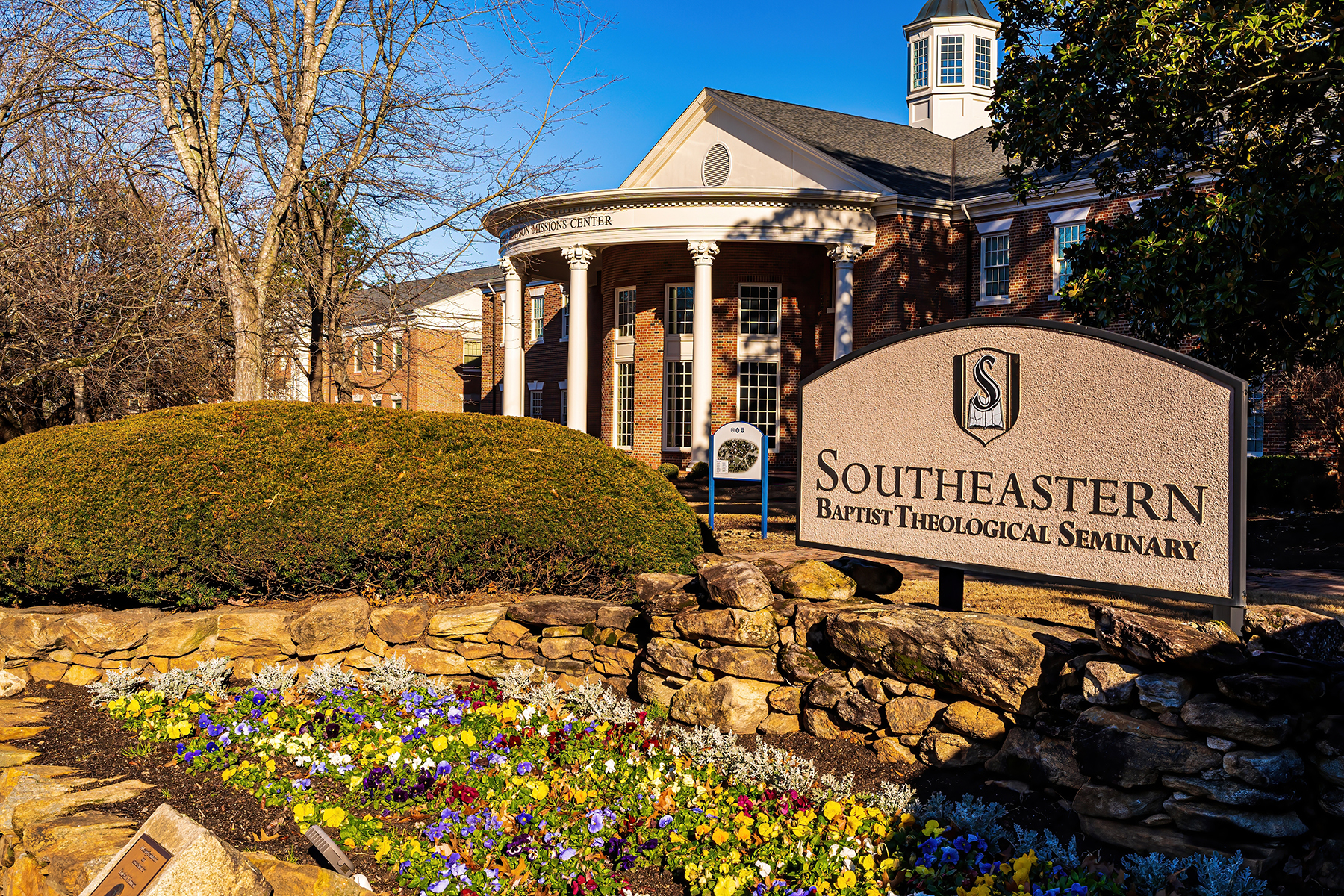A Legacy Set In Stone
The Story Behind Wake Forest's Iconic Stone Wall

In the educational, spiritual, and aesthetic center of town stands a collection of beautiful buildings spread across 300 acres of meticulously maintained grounds. Starting in 1834 and ending in 1956 when it relocated to Winston-Salem, it was once home to Wake Forest College. In 1951, Southeastern Baptist Theological Seminary began offering classes there, and acquired the entire campus in 1956.
The landscape of the abundant acreage evolved over the first 100 some years – most notably to include the creation of a sturdy and charming fieldstone wall that surrounds the campus – built from 1885 to the early 1900s. Made without mortar, the walls are flexible and withstand changing environmental conditions like rain, temperature, and shifting ground.
Along with five gates on the north, west, and south sides, the lush lawns, mature trees, and shrubs that adorn the grounds and the sense of beauty, peace, and purpose emanating from this sacred space cannot be overstated. The gates are formed by stone bases, extensions of the walls, and support delicate cast-iron arches. Electric lamps set in the peaks of the arches were installed in the early 1990s.
Indeed, for those lucky enough to live or work nearby, or make it part of a downtown visit, walking across the grounds is both like being transported back in time and experiencing what amounts to an ambulatory meditation. Wandering the paths as they crisscross the campus, in close proximity to the large and leafy magnolia and boxwood trees and abundant azaleas, pansies, and tulips, admiring the simple bricked beauty of the buildings and landscape architecture – all surrounded and insulated by the stone wall – wondering how it came together and imagining all who were there before, constitutes something of a spiritual experience in itself.
Two bronze plaques near the wall honor those who built and preserved it. The north plaque commemorates Doctor Tom (Tom Jeffreys), a dedicated maintenance worker and gardener at Wake Forest College from 1880 to 1927, who, along with Len Crenshaw, constructed the wall. Jeffreys was born enslaved in Virginia around 1846 and moved to Wake Forest in the 1880s with his wife and children. He worked at the college until his passing in 1927. The south plaque recognizes Douglas Buttram, a Seminary student who repaired the walls in the 1990s.
“Dry-laid stone walls are found throughout the historic areas of Wake Forest and contribute to the character and sense of place of the town,” said Michelle Michael, senior planner for Historic Preservation. “These walls were erected using local materials to build retaining walls, boundaries, and property lines. They are a significant part of our historic landscape and are worthy of preservation.”
According to Ed Morris, retired director of the Wake Forest Historical Museum, visitors and residents alike take note of the imposing stone wall, often wondering about its origins. “Few likely know it was built by a formerly enslaved man in the late 1800s,” he said. Unlike the wooden fences common at the time, the stone wall was a visionary alternative, suggested by Jeffreys as a low-maintenance solution to enclose the campus. It served to define the school’s boundaries, keep wandering livestock out, and contain sheep once used to maintain the college grounds.
By 1931, four years after Jeffreys’ passing, the community honored his nearly 50 years of service with a commemorative plaque. Over time, the wall became both a landmark and a testament to his legacy.
North Main resident and longtime Wake Forest Garden Club member Ruth Ann Dyer considers the wall an irreplaceable part of the town’s identity. “The wall is a symbol of what we once were and how we started and greatly contributes to the small-town character of the town,” she said. “I can’t imagine the center of our town not having that wall. It’s not about keeping people out or in, but inviting them to sit, walk, and take in the fresh air.”
“There’s a sense of peace there,” Dyer said of the Seminary. “Walk the brick walkway, sit for a spell on the benches or on the wall. Take in the beauty of the scenery. Look at the trees and smell the fragrance of the flowers drifting through the air. It is the core of this community. It always has been and always will be.”
Today, Wake Forest has fully embraced the stone wall as a treasured symbol. Its influence extends to new developments, from Heritage to Joyner Park, where similar stonework continues to honor its legacy.
This spring, take a stroll alongside the historic wall and reflect on the deep history embedded within its stones. Whether you’re a longtime resident or a first-time visitor, this cherished landmark invites all to pause, appreciate, and connect with the past.
Jason Cannon
President of Wake Forest Business & Industry Partnership, a non-profit organization that promotes Wake Forest as a destination for business and industry through economic development activities that expand the tax base, increase job opportunities, and foster positive economic impact on the community.

